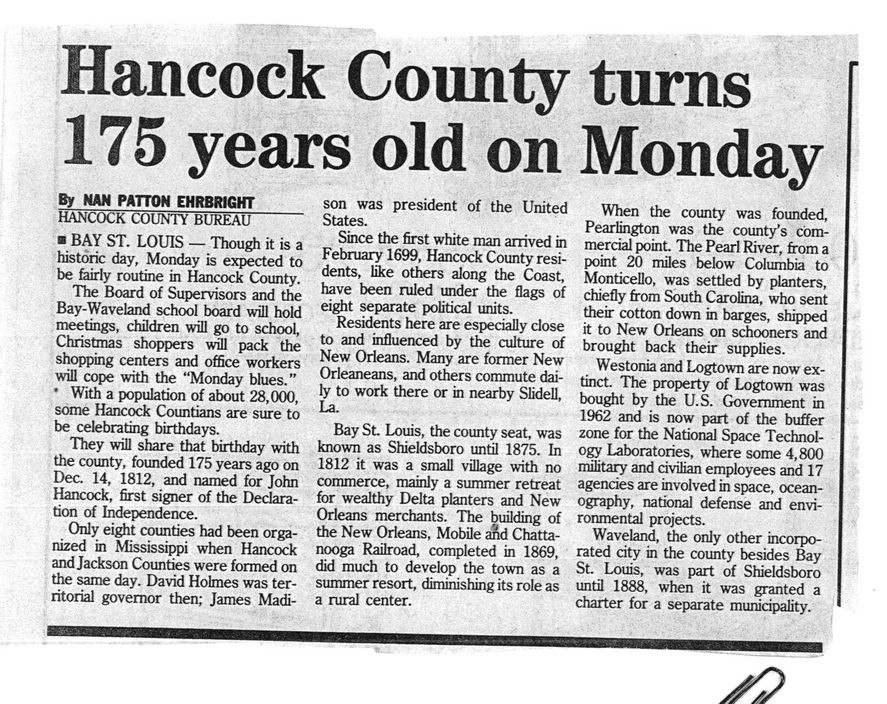This text was obtained via automated optical character recognition.
It has not been edited and may therefore contain several errors.
Hancock County turns 175 years old on Monday By NAN PATTON EHRBRIGHT HANCOCK COUNTY BUREAU ■ BAY ST. LOUIS — Though it is a historic day, Monday is expected to be fairly routine in Hancock County. The Board of Supervisors and the Bay-Waveland school board will hold meetings, children will go to school, Christmas shoppers will pack the shopping centers and office workers will cope with the “Monday blues.” ’ With a population of about 28,000, some Hancock Countians are sure to be celebrating birthdays. They will share that birthday with the county, founded 175 years ago on Dec. 14, 1812, and named for John Hancock, first signer of the Declaration of Independence. Only eight counties had been organized in Mississippi when Hancock and Jackson Counties were formed on the same day. David Holmes was territorial governor then; James Madi- son was president of the United States. Since the first white man arrived in February 1699, Hancock County residents, lie others along the Coast, have been ruled under the flags of eight separate political units. Residents here are especially close to and influenced by the culture of New Orleans. Many are former New Orleaneans, and others commute daily to work there or in nearby Slidell, La. Bay St. Louis, the county seat, was known as Shieldsboro until 1875. In 1812 it was a small village with no commerce, mainly a summer retreat for wealthy Delta planters and New Orleans merchants. The building of the New Orleans, Mobile and Chattanooga Railroad, completed in 1869, did much to develop the town as a summer resort, diminishing its role as a rural center. When the county was founded, Pearlington was the county’s commercial point. The Pearl River, from a point 20 miles below Columbia to Monticello, was settled by planters, chiefly from South Carolina, who sent their cotton down in barges, shipped it to New Orleans on schooners and brought back their supplies. Westonia and Logtown are now extinct. The property of Logtown was bought by the U.S. Government in 1962 and is now part of the buffer zone for the National Space Technology Laboratories, where some 4,800 military and civilian employees and 17 agencies are involved in space, oceanography, national defense and environmental projects. Waveland, the only other incorporated city in the county besides Bay St. Louis, was part of Shieldsboro until 1888, when it was granted a charter for a separate municipality.

Hancock County Hancock-County-(175)